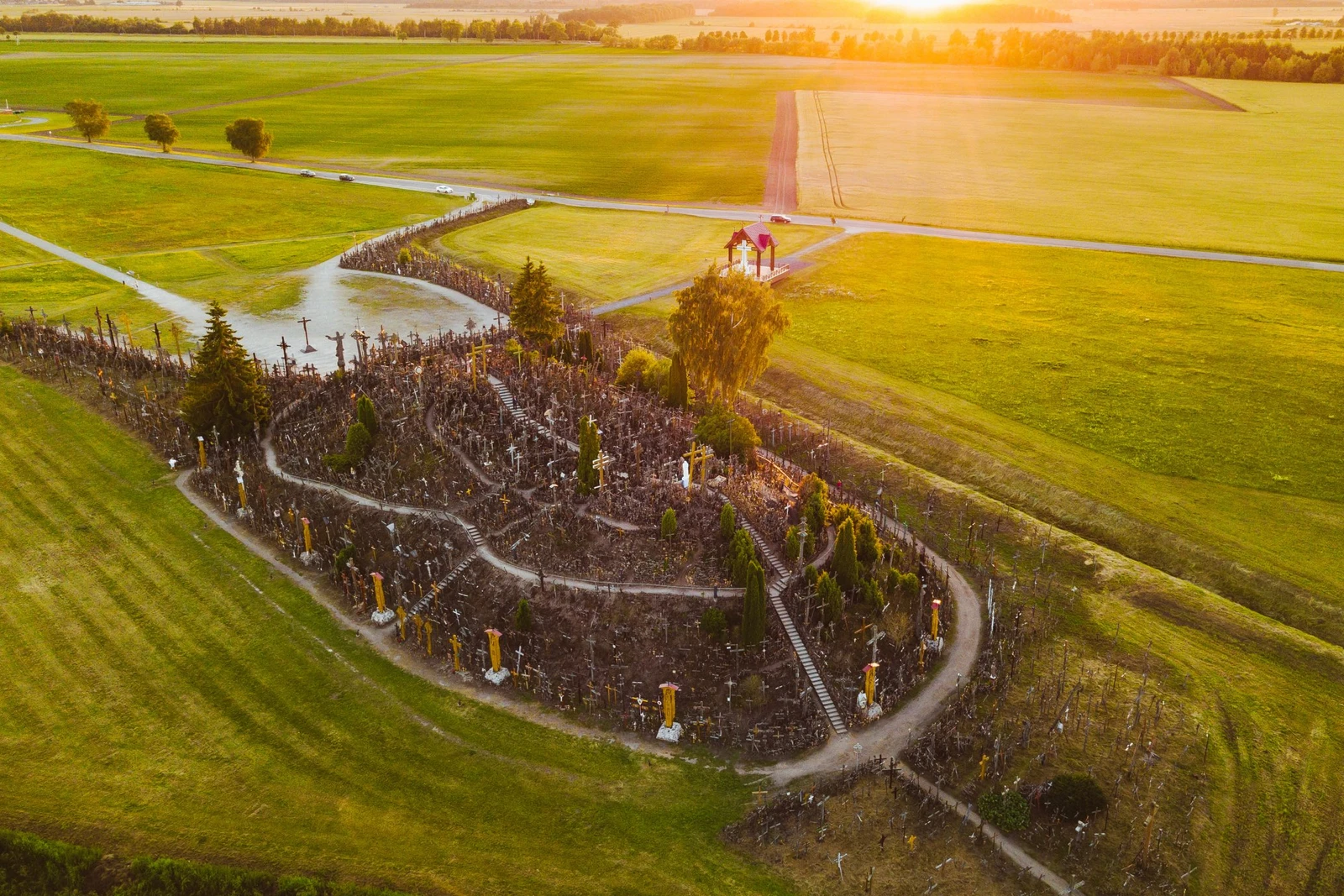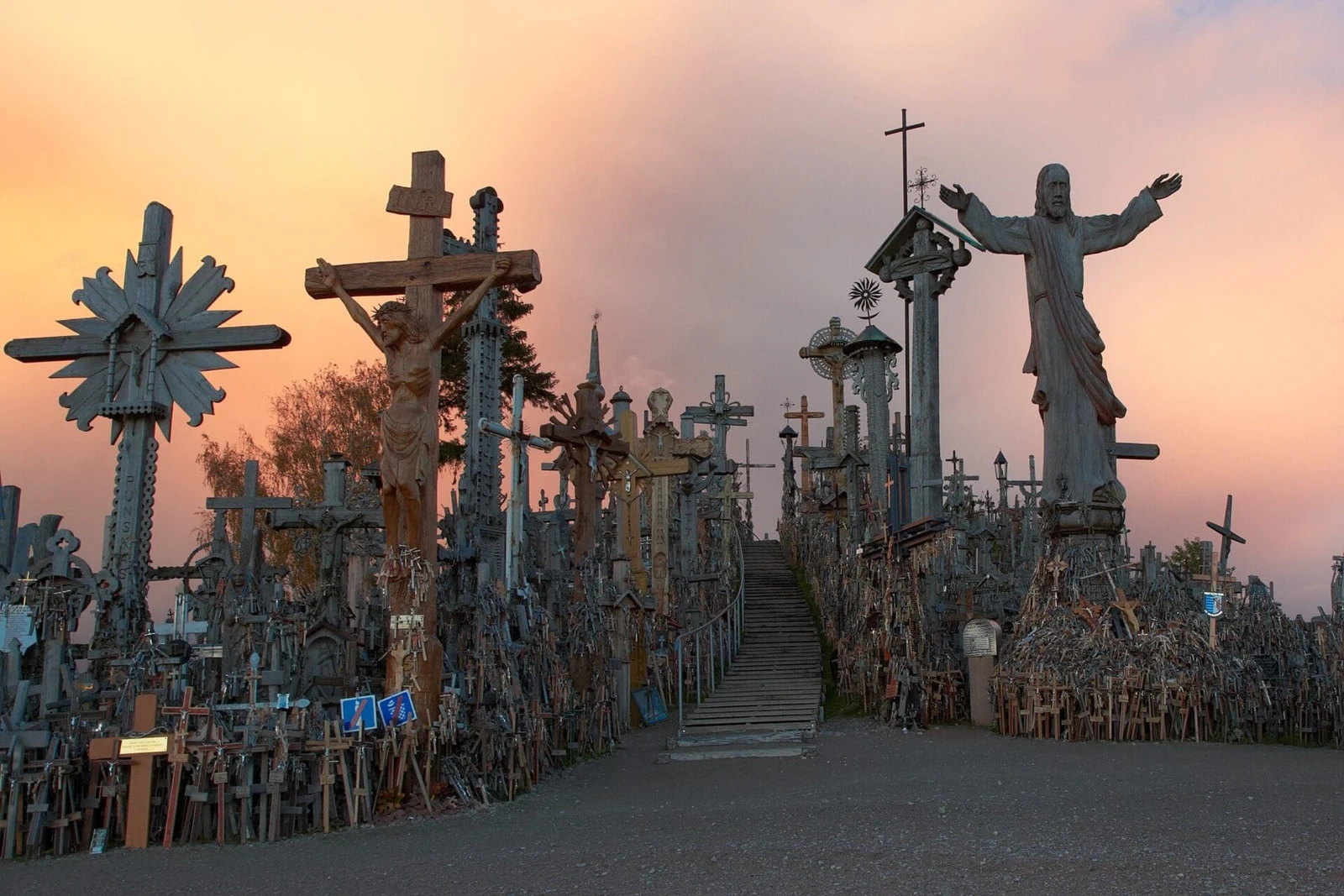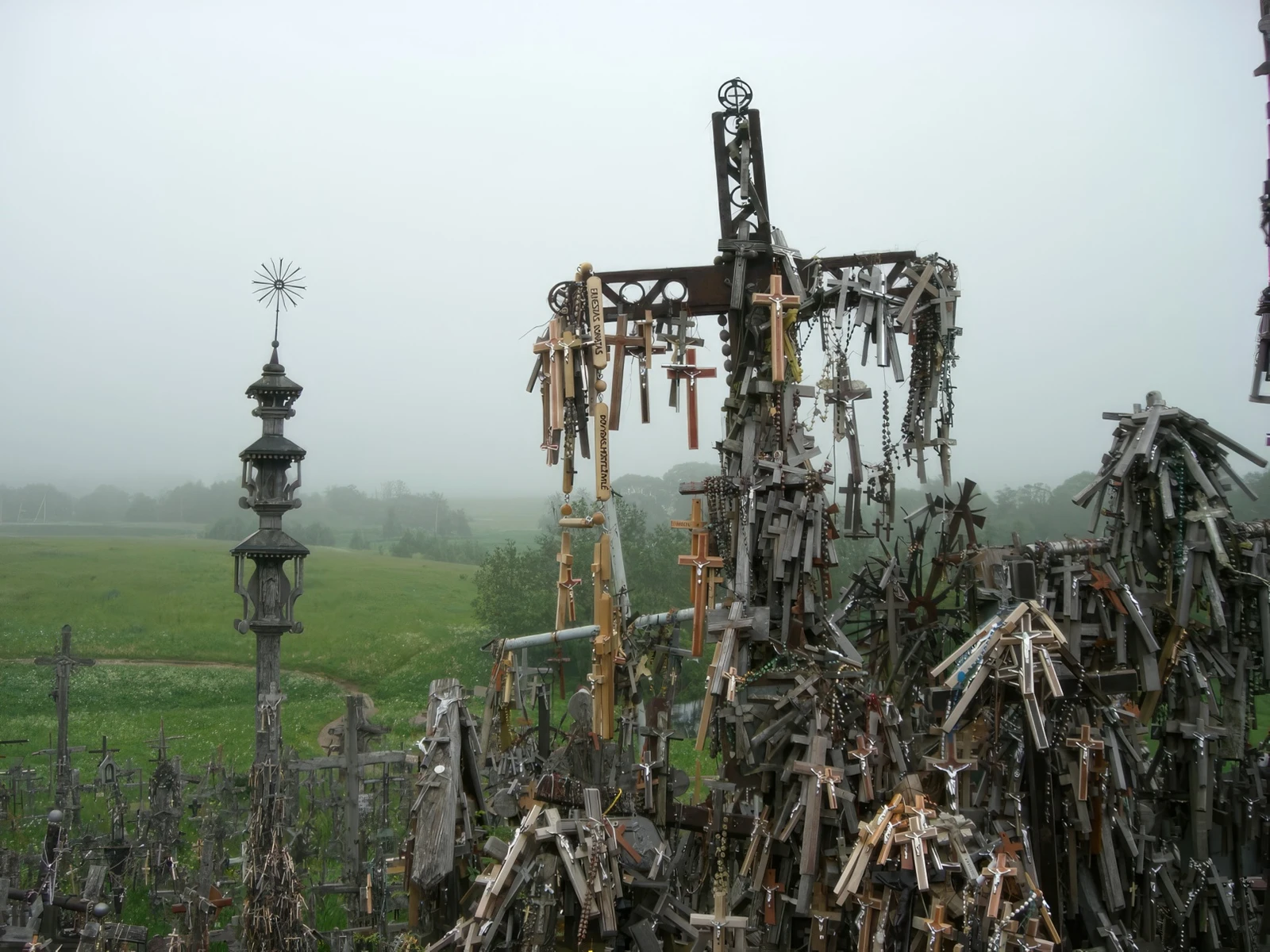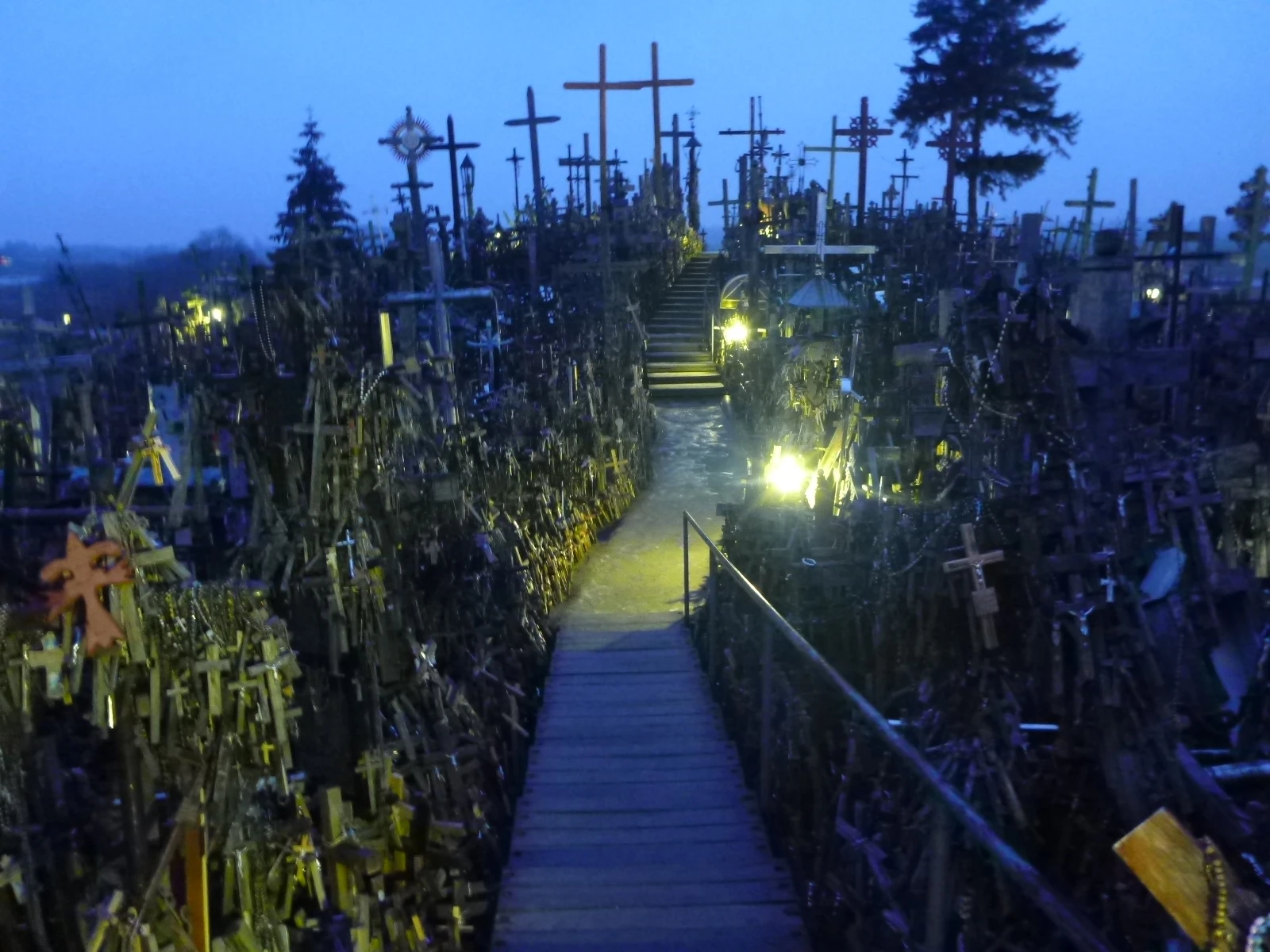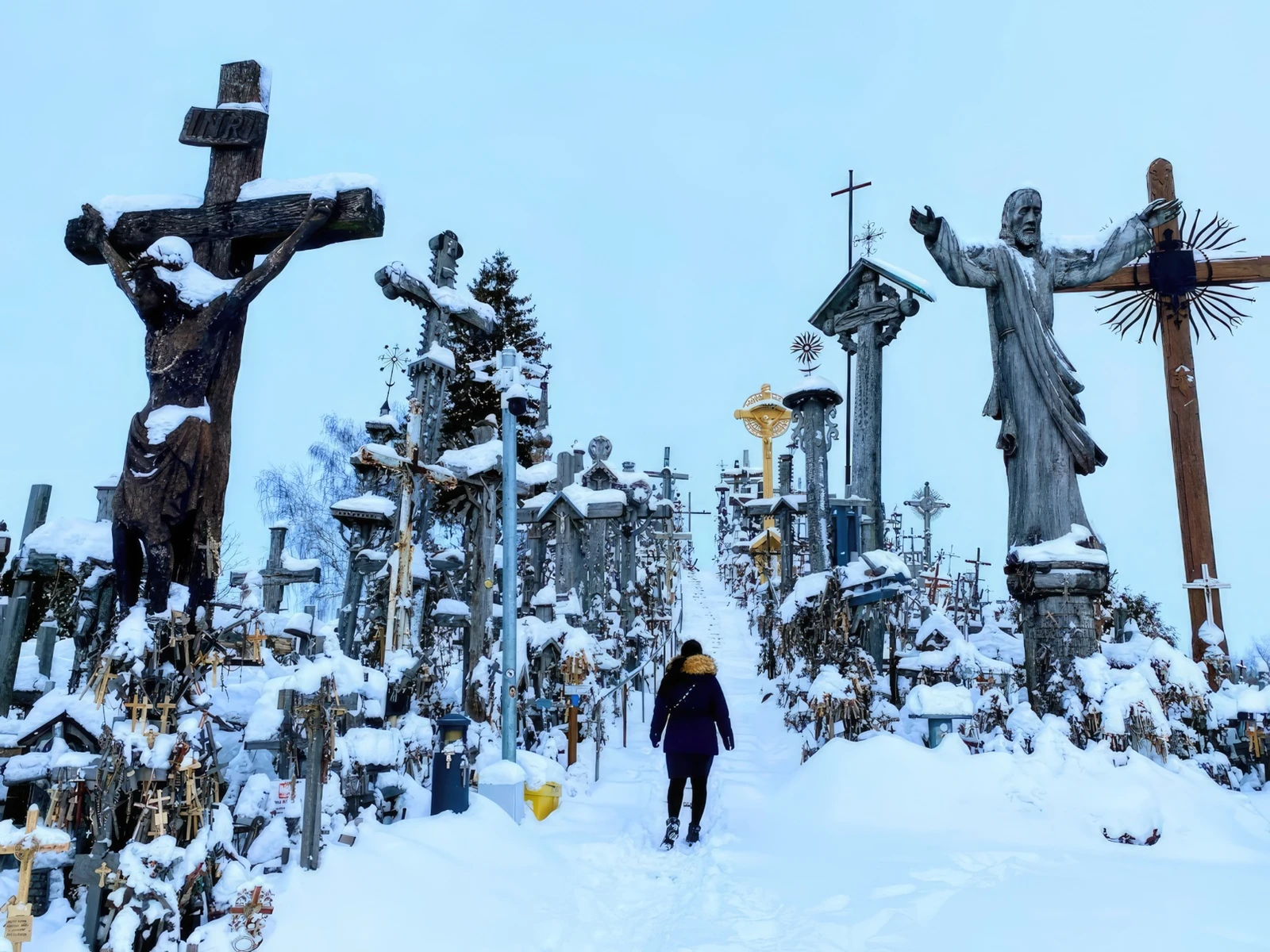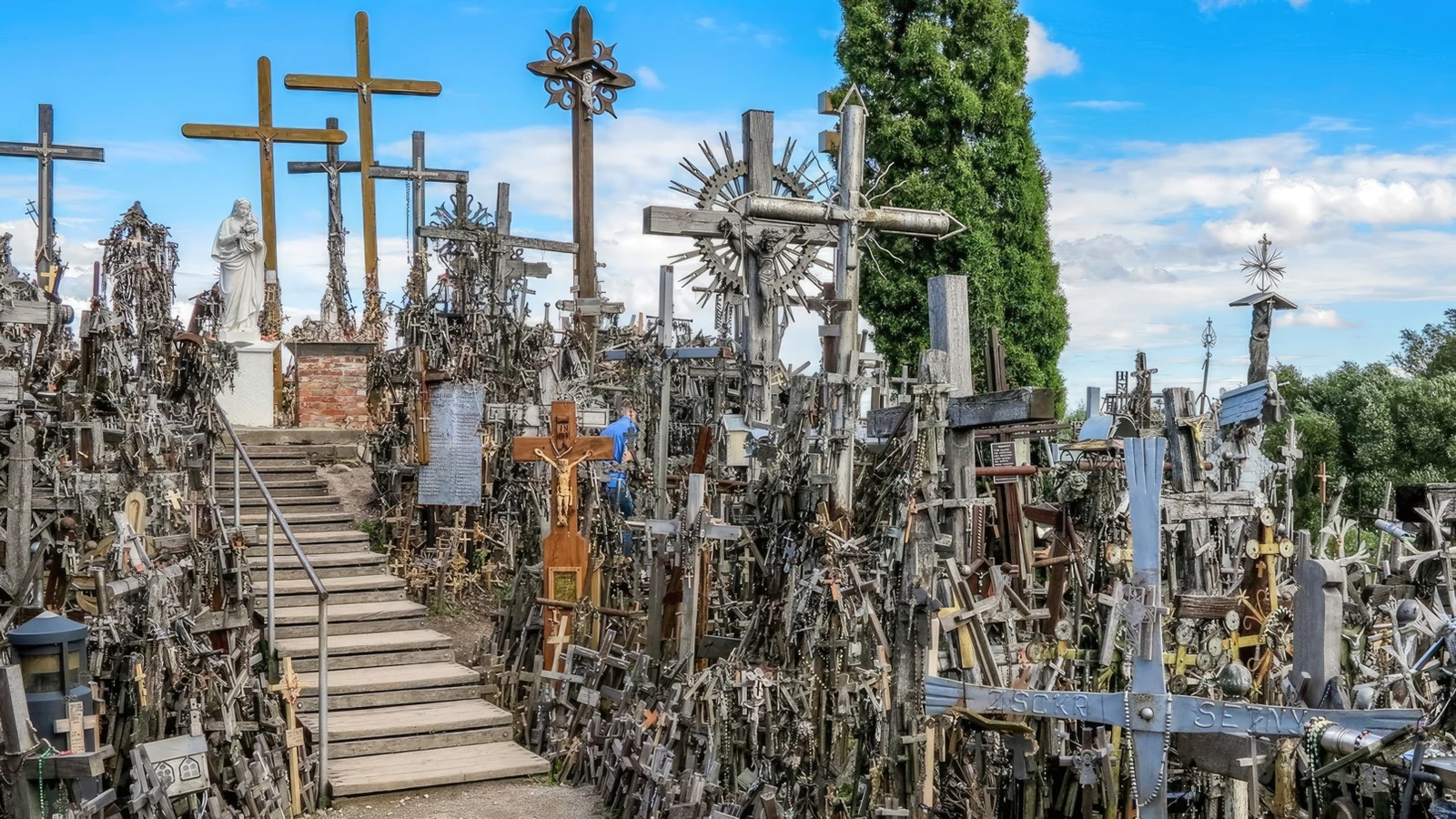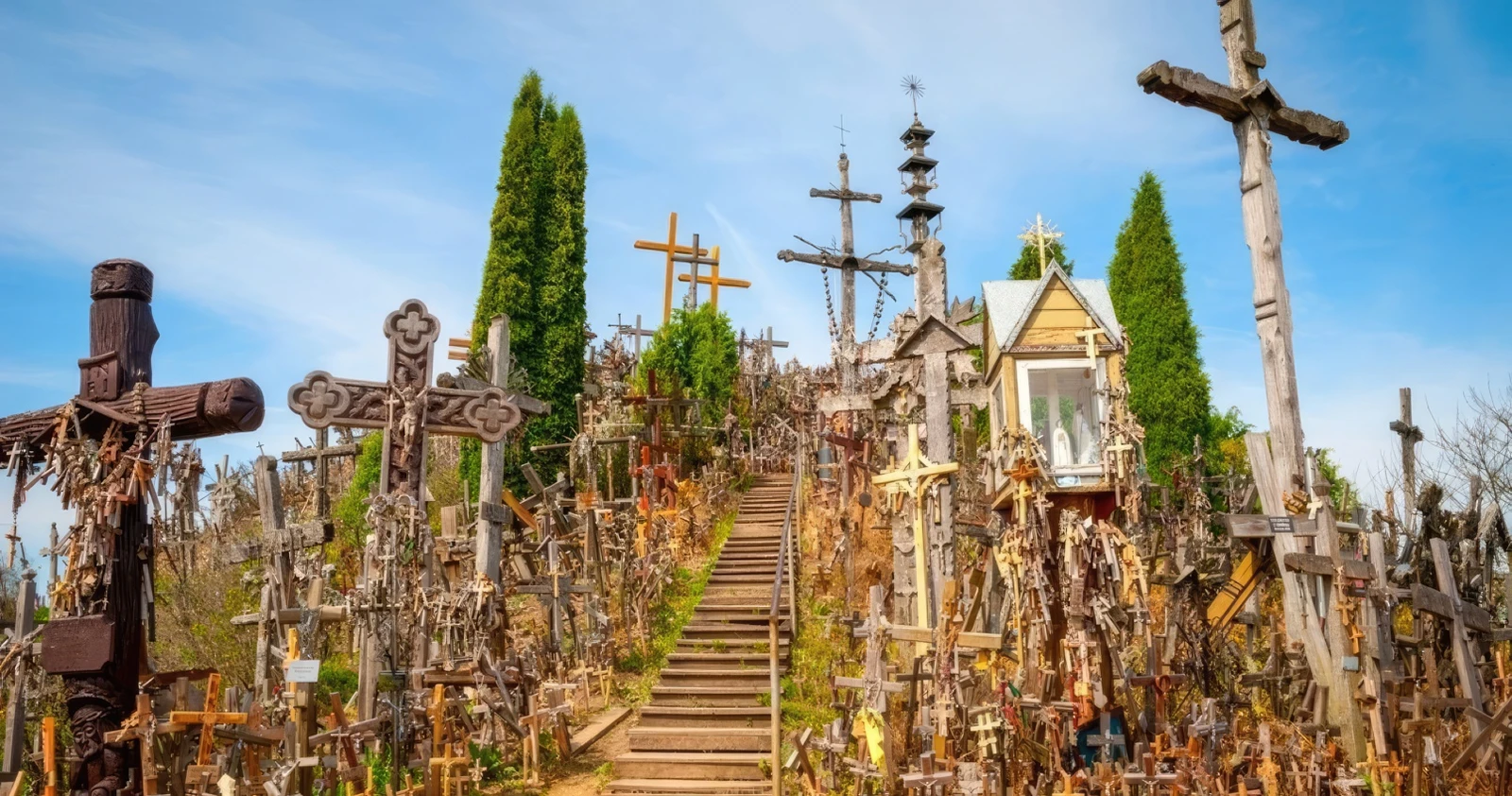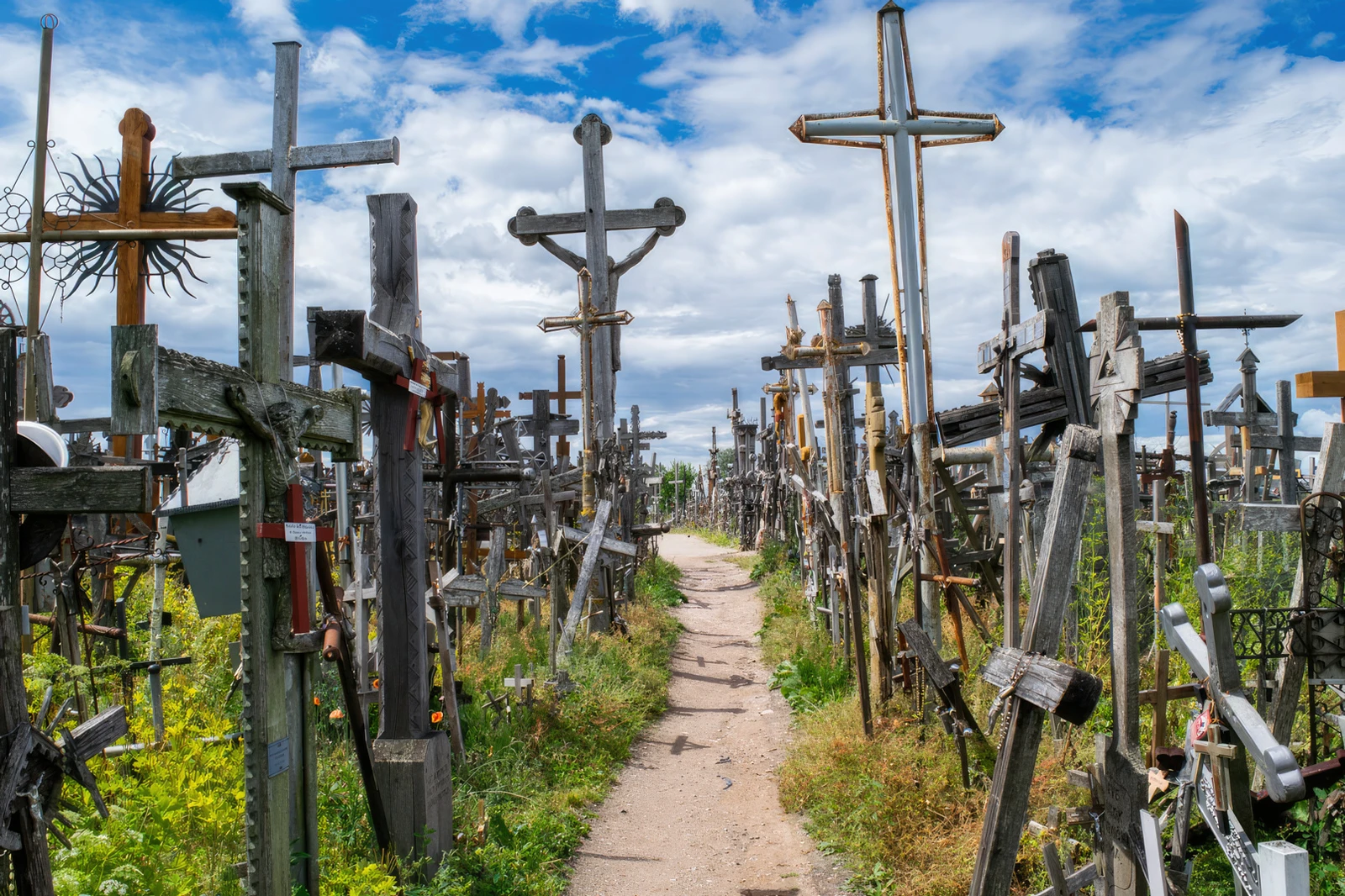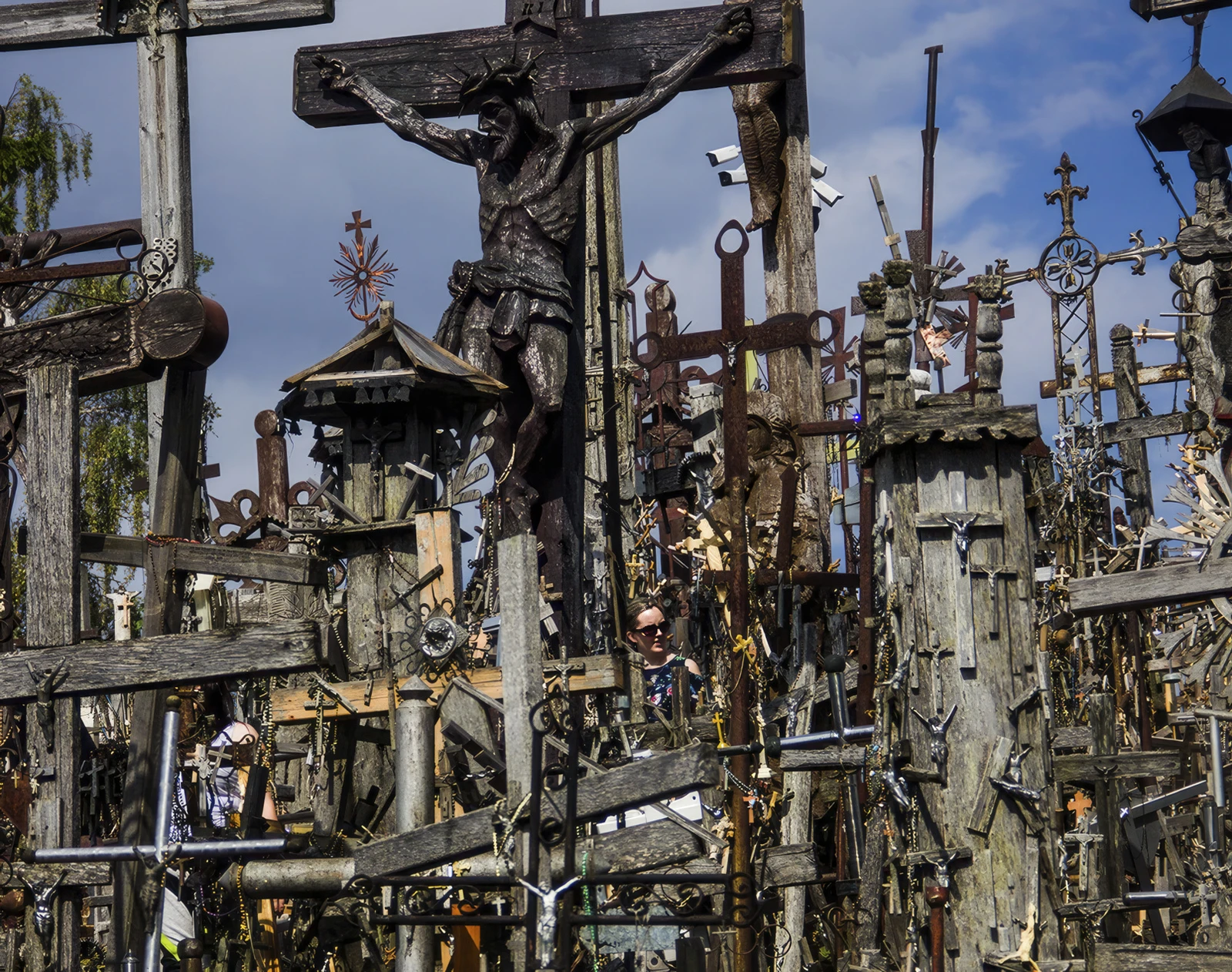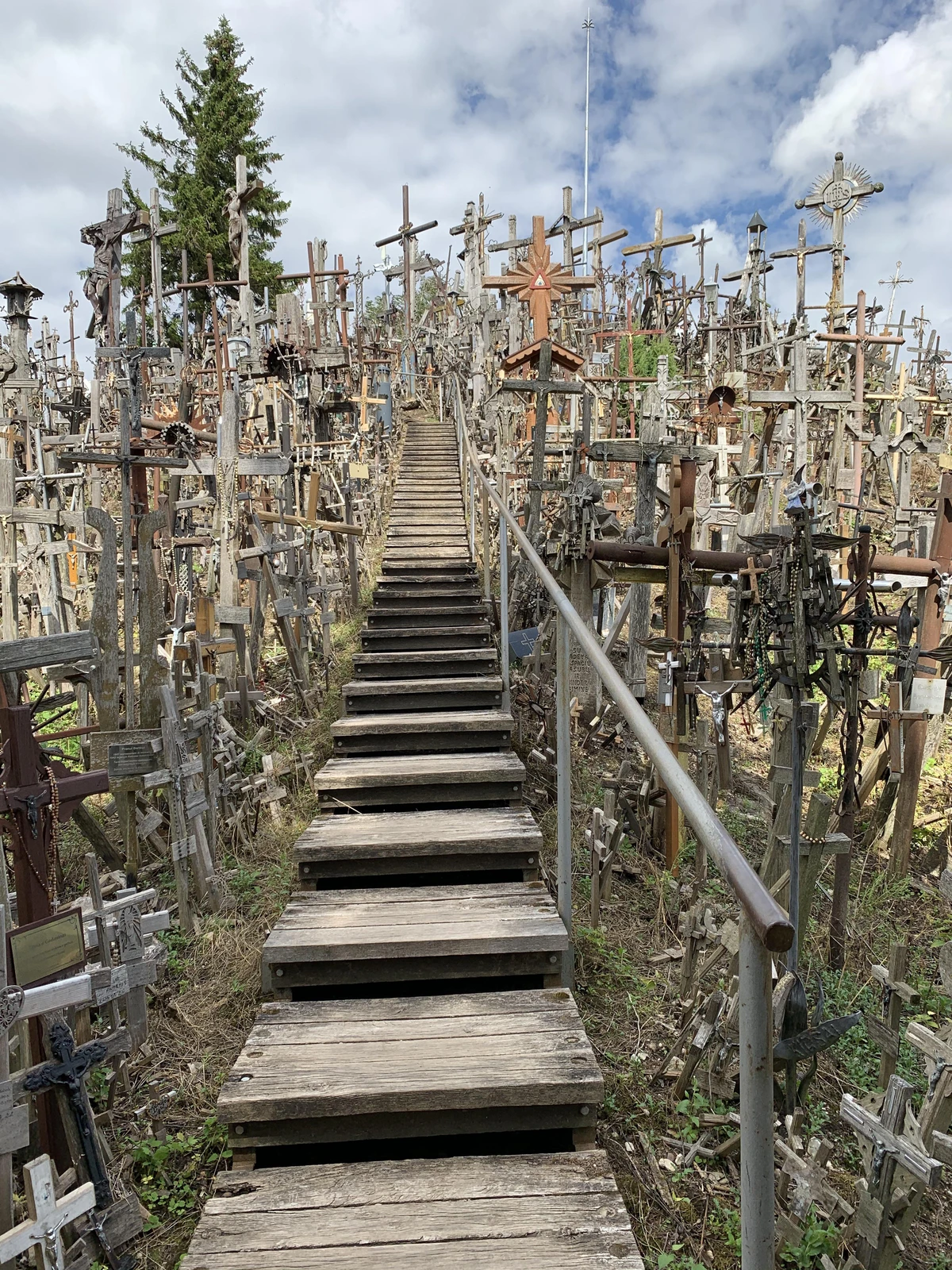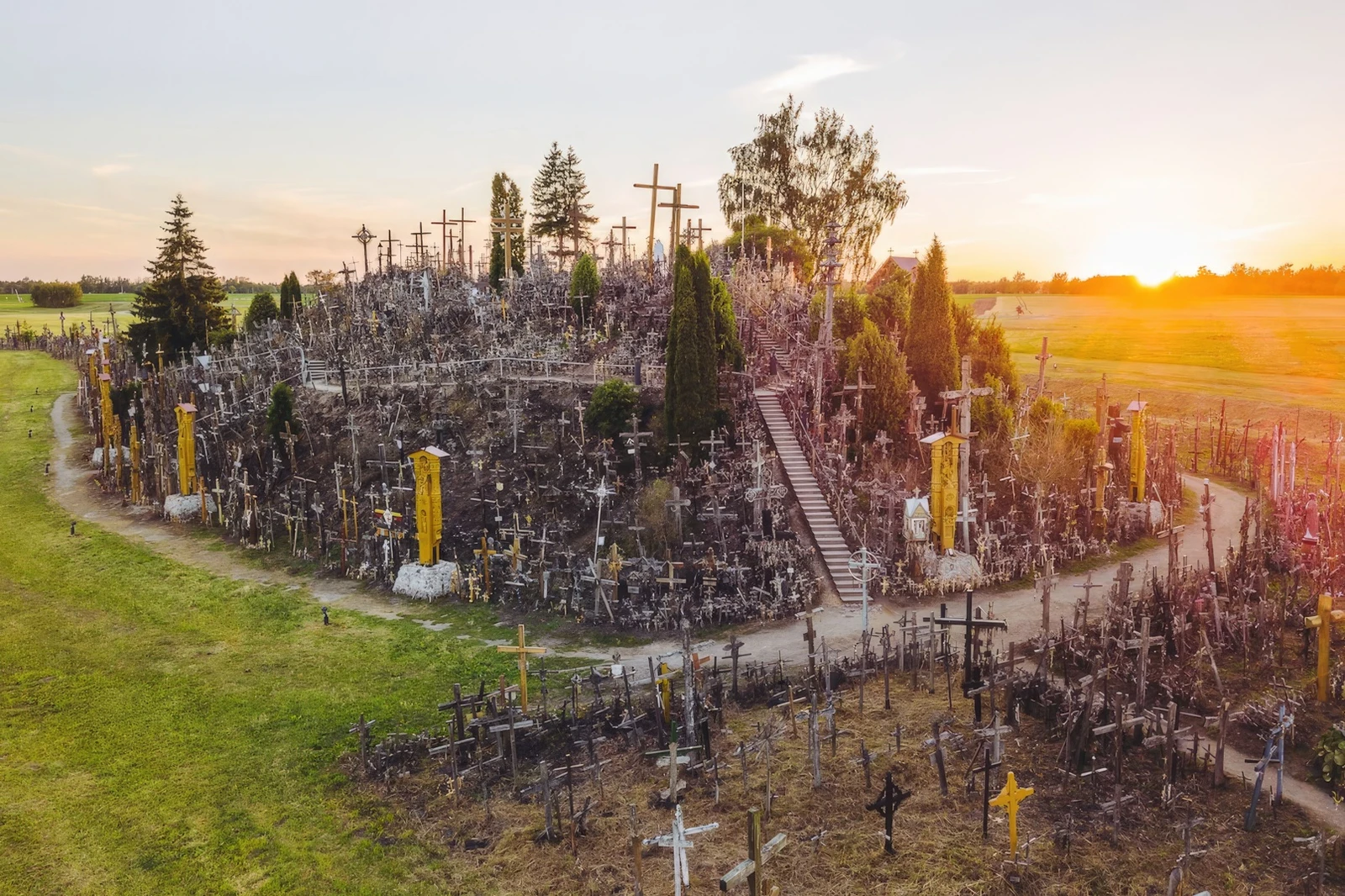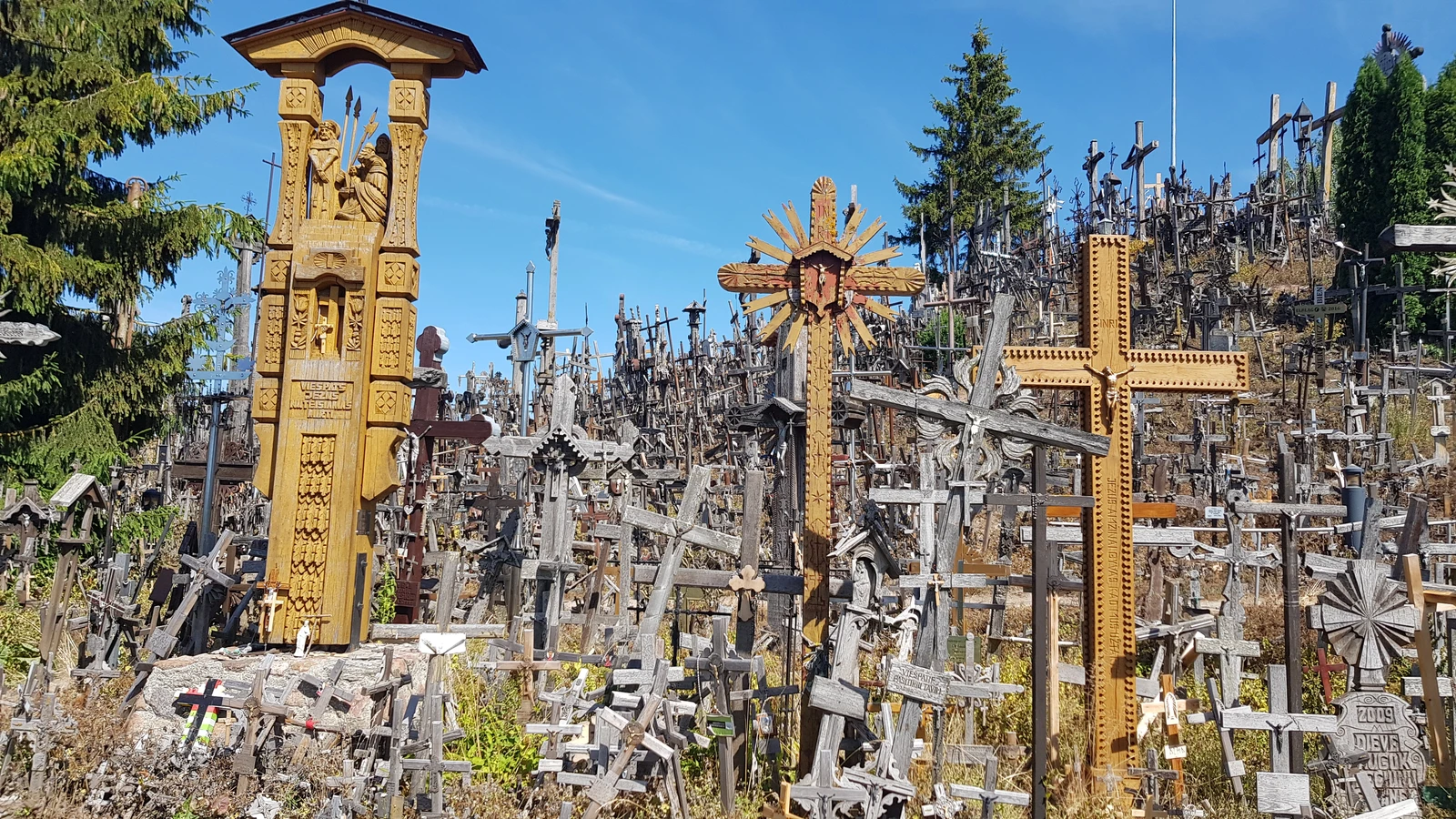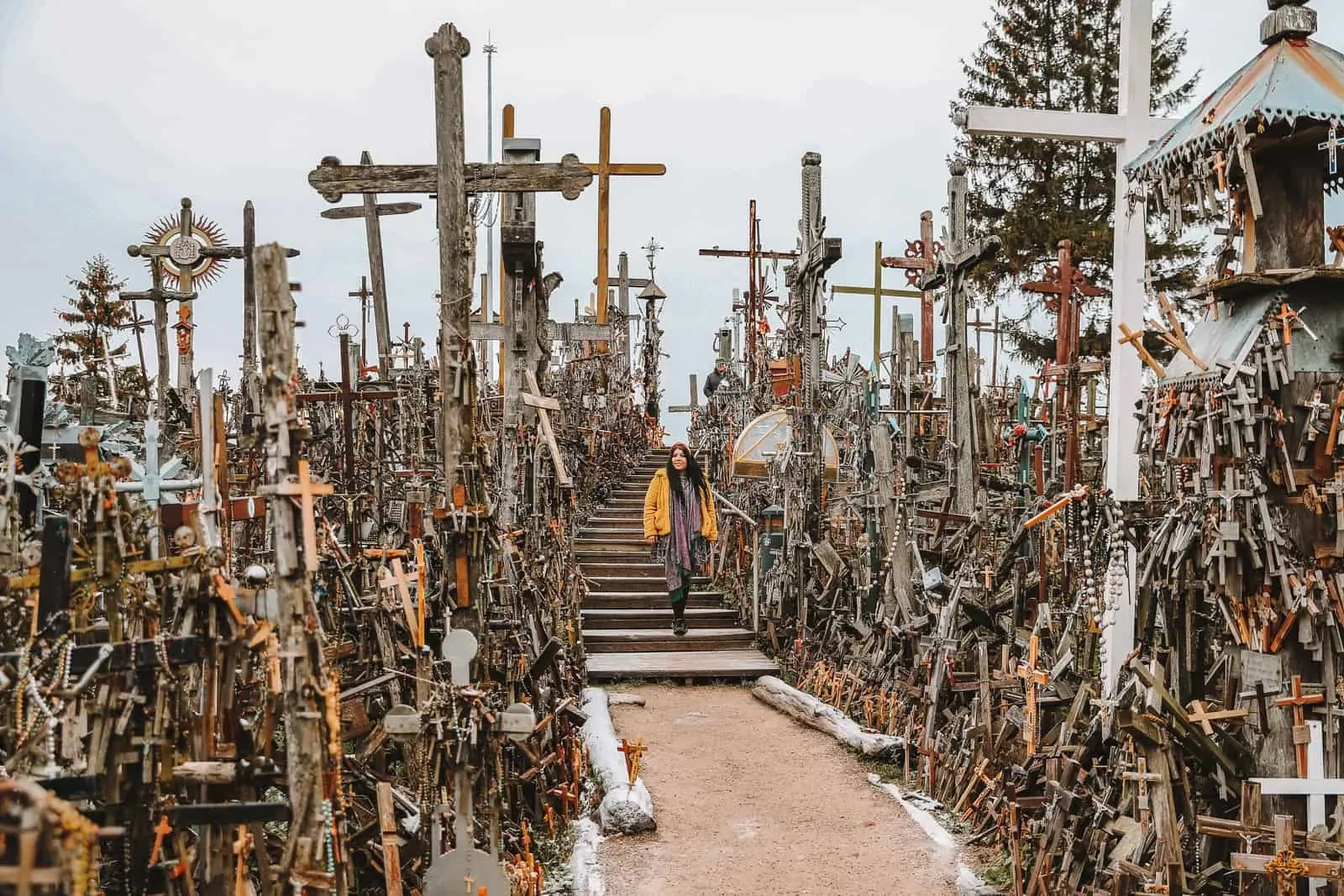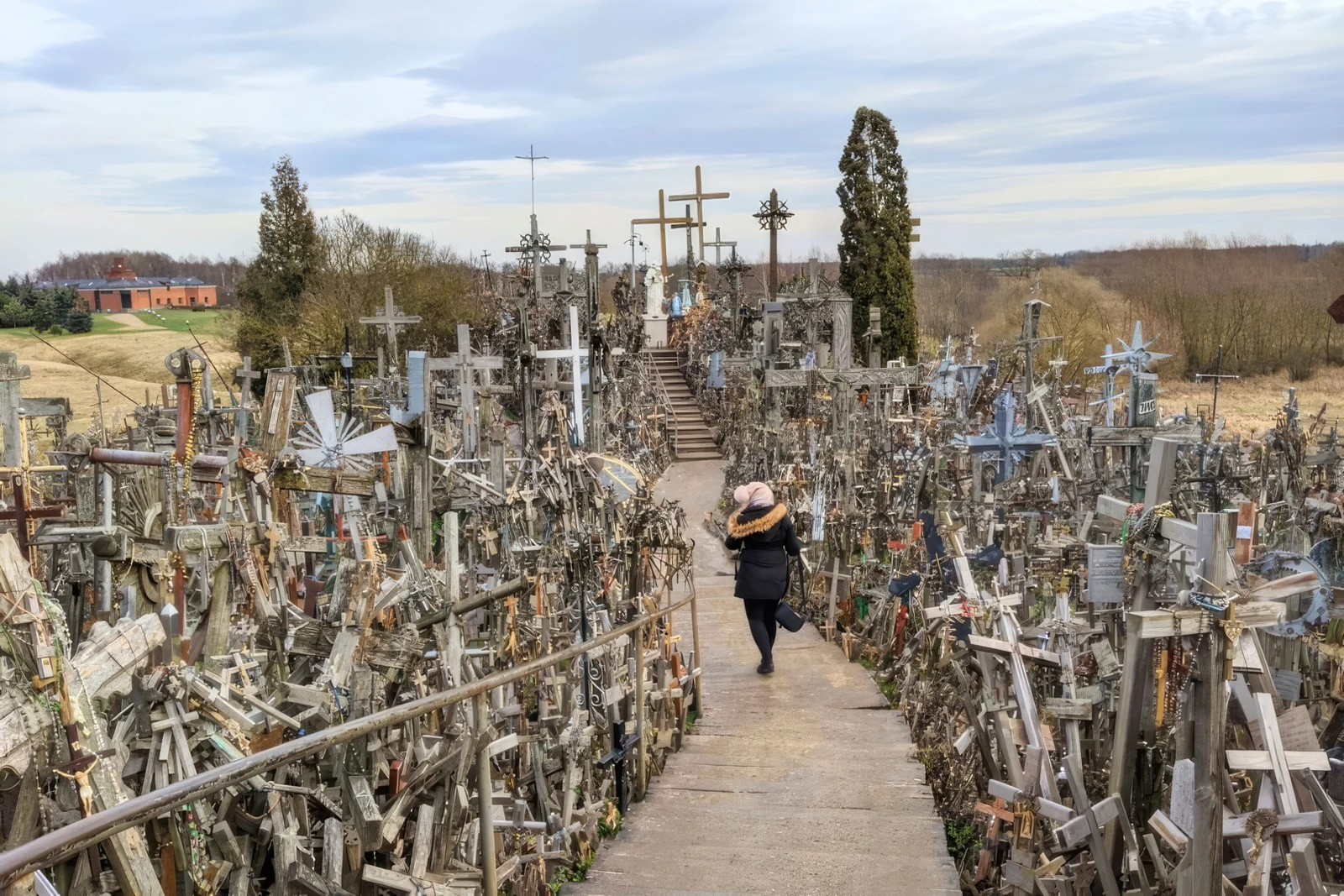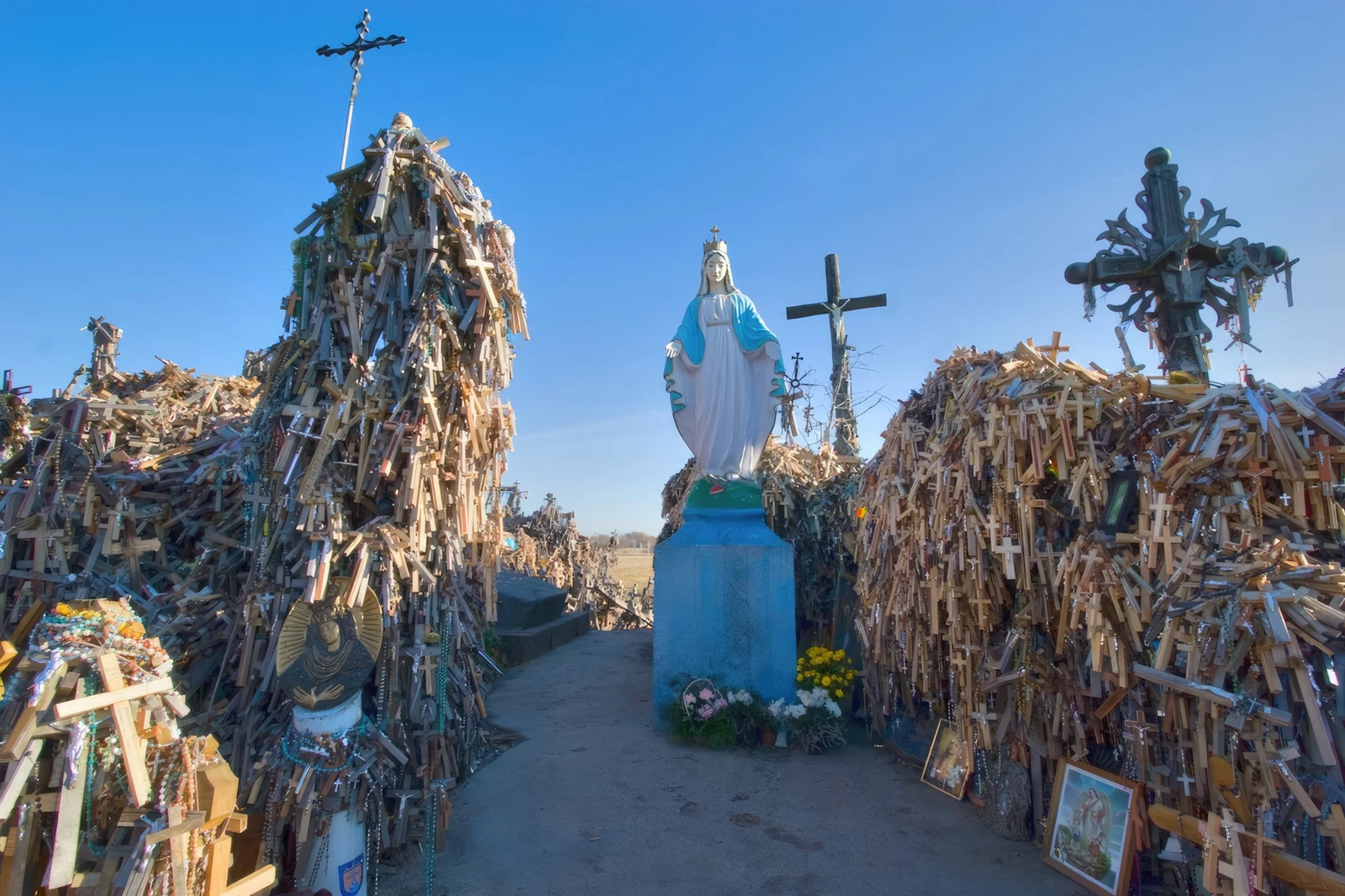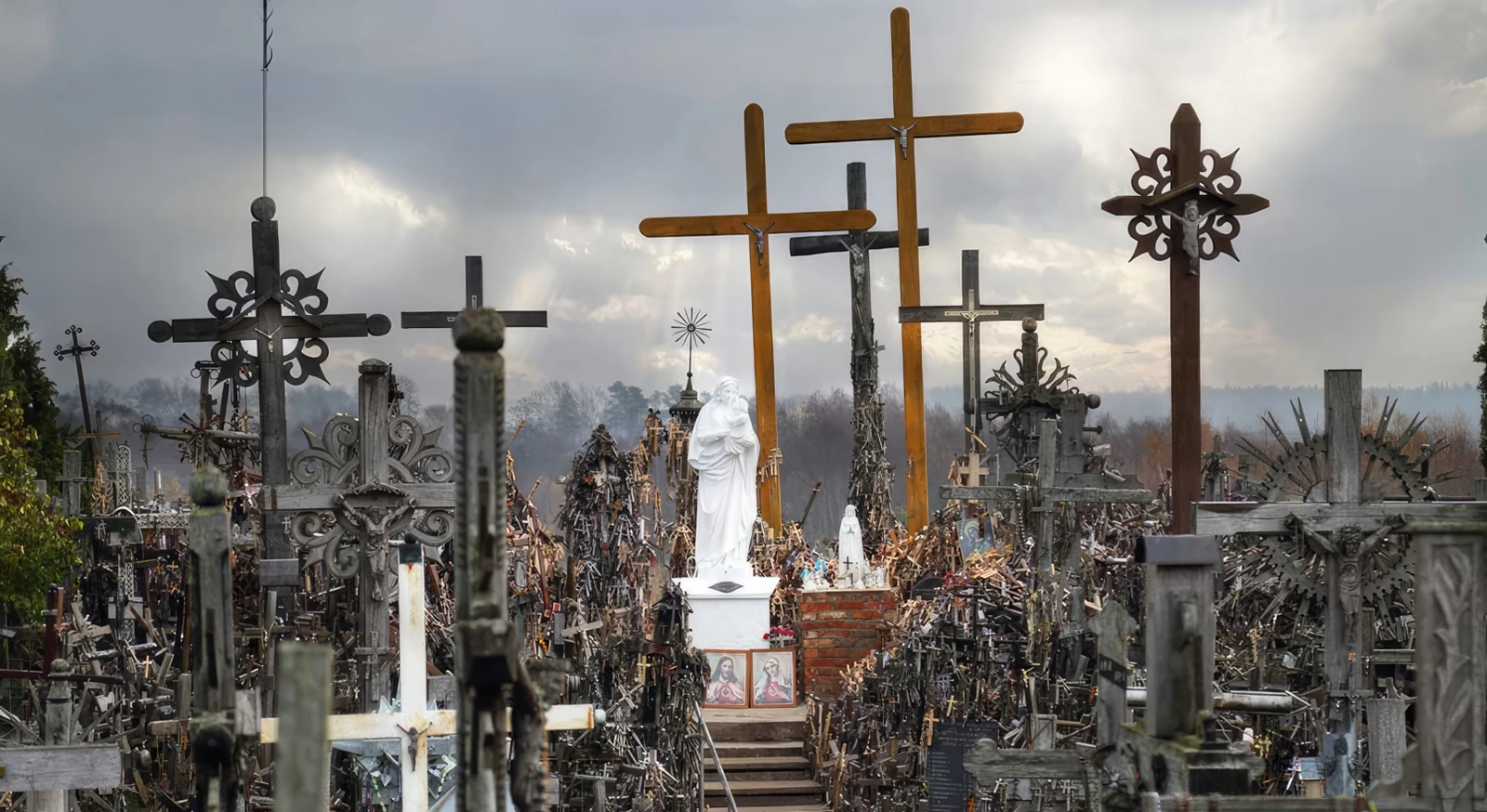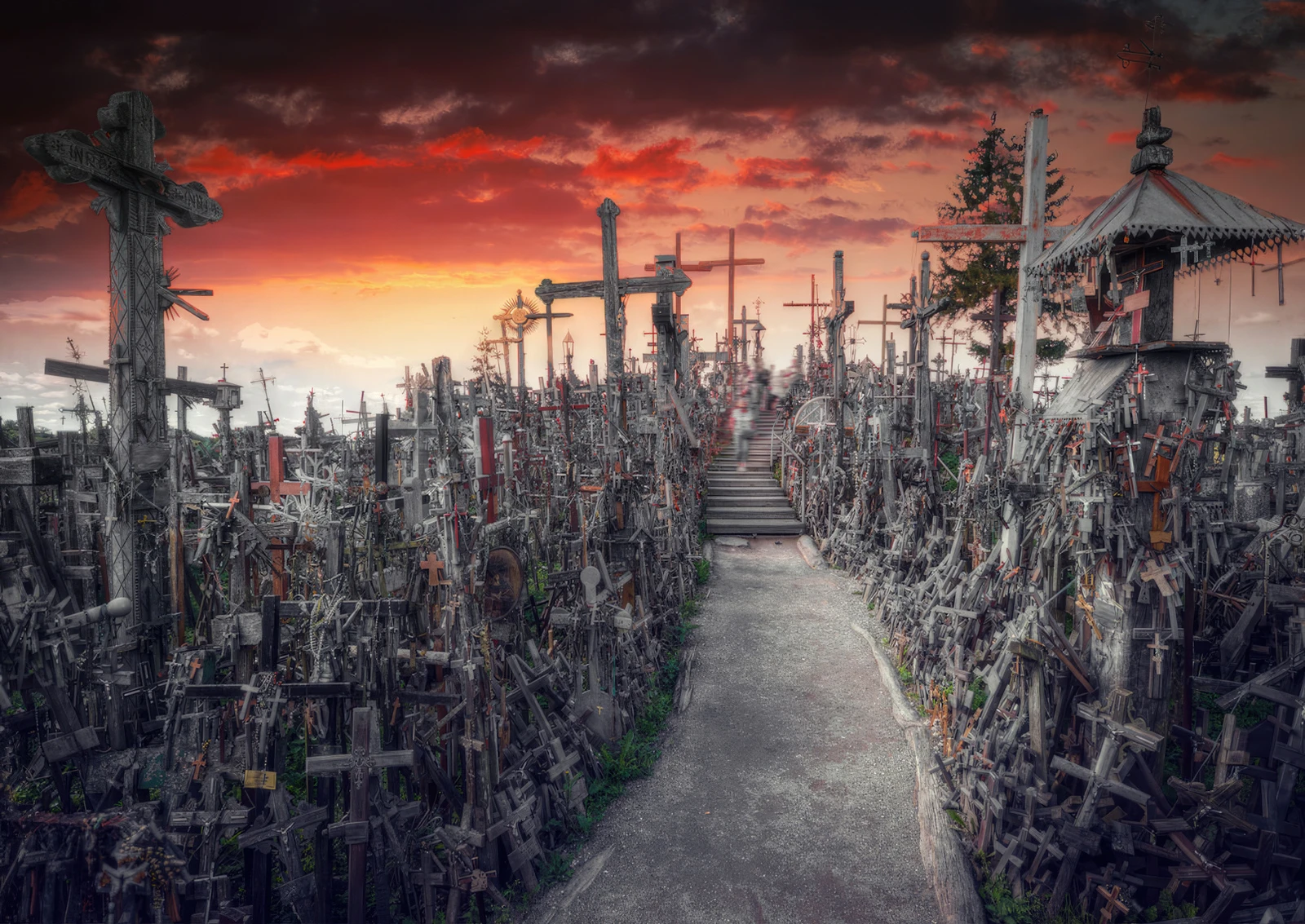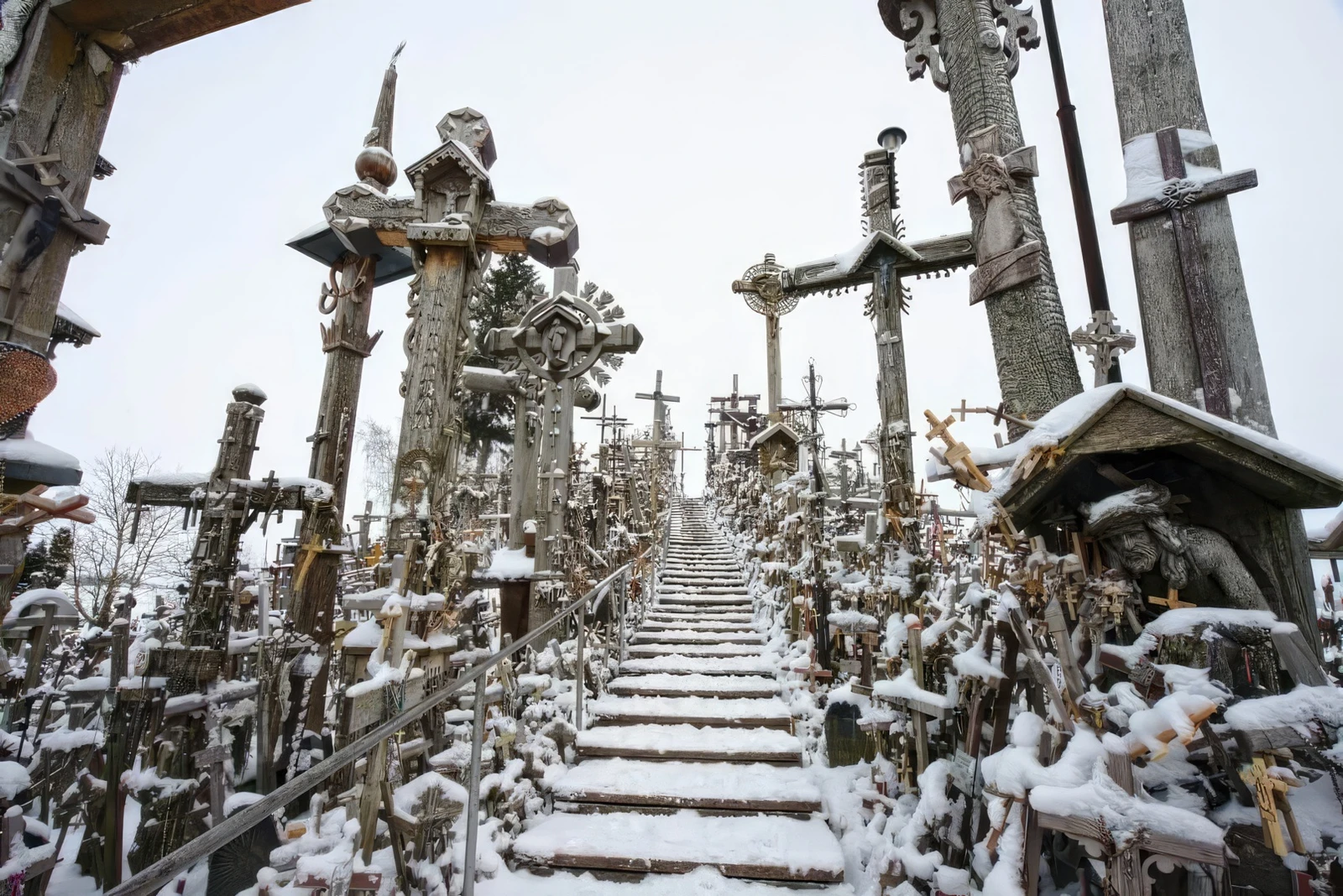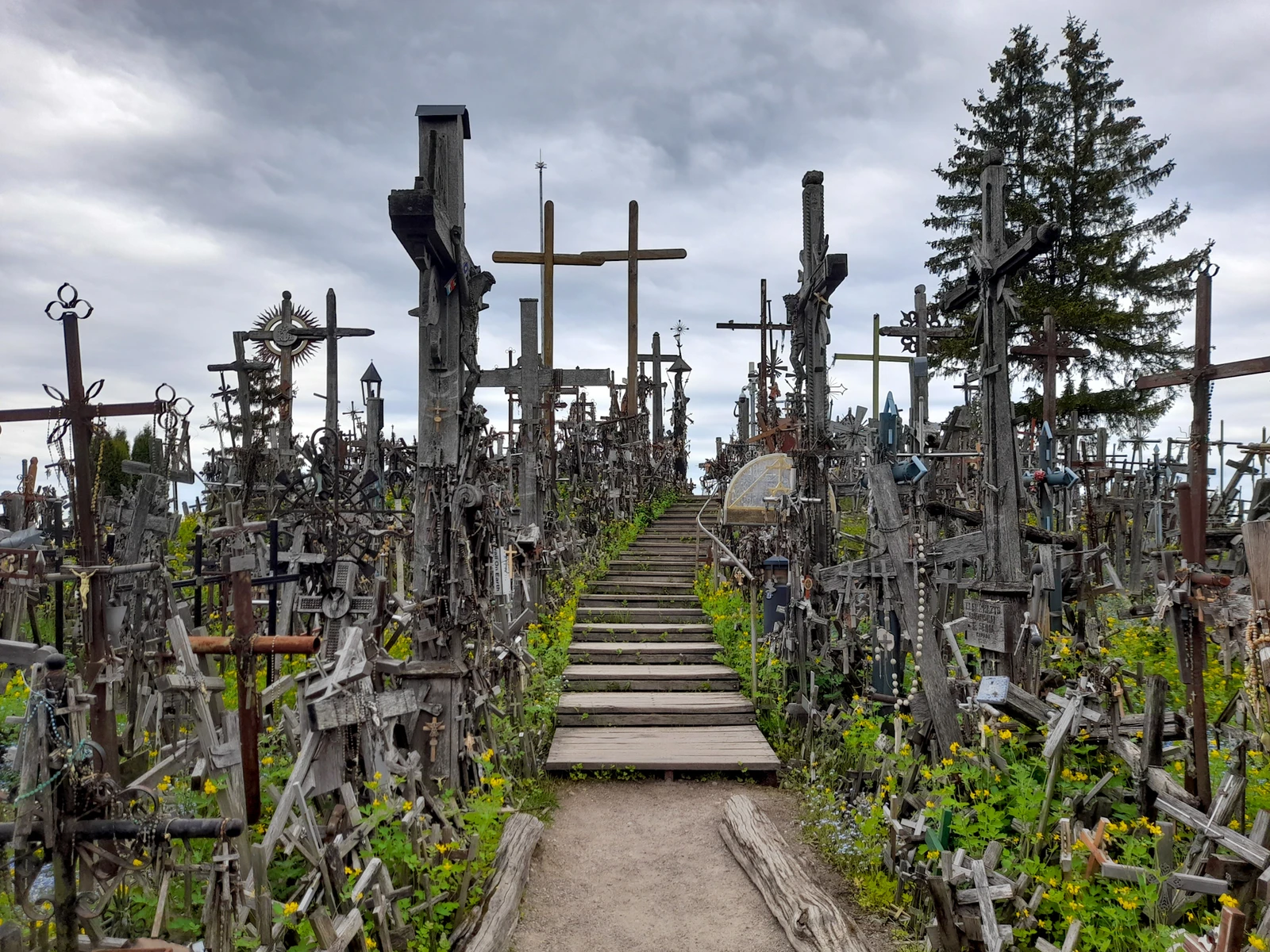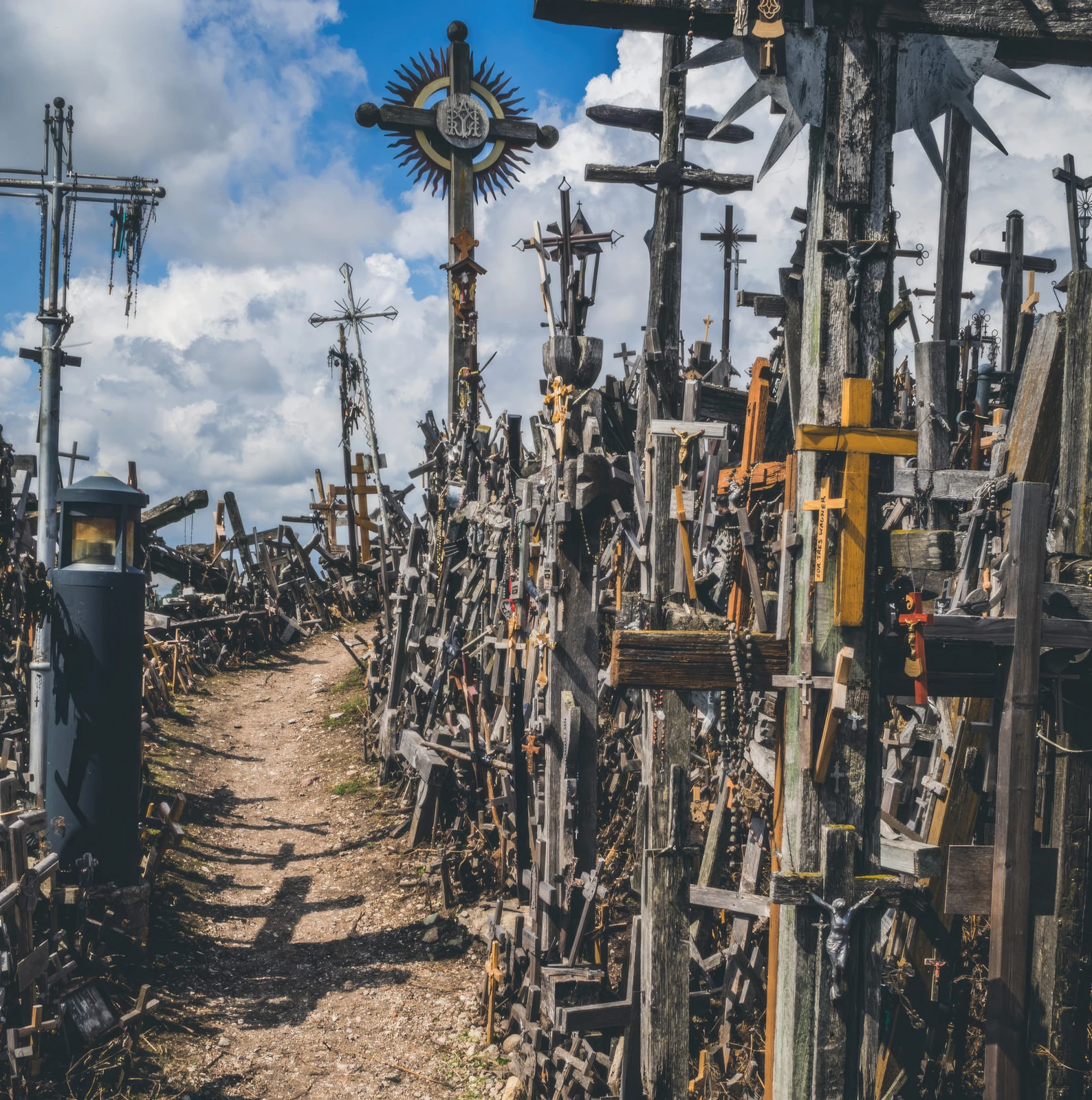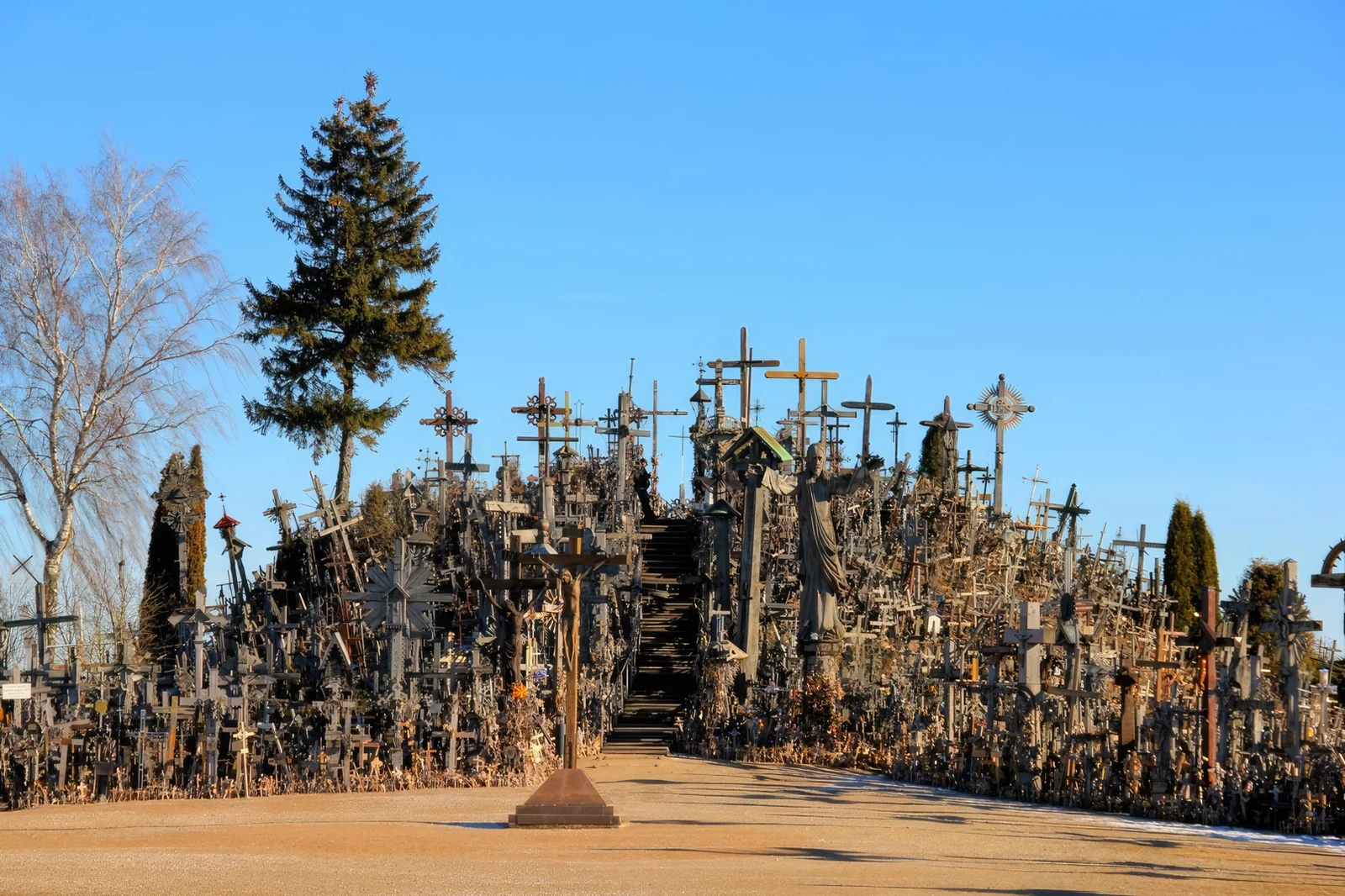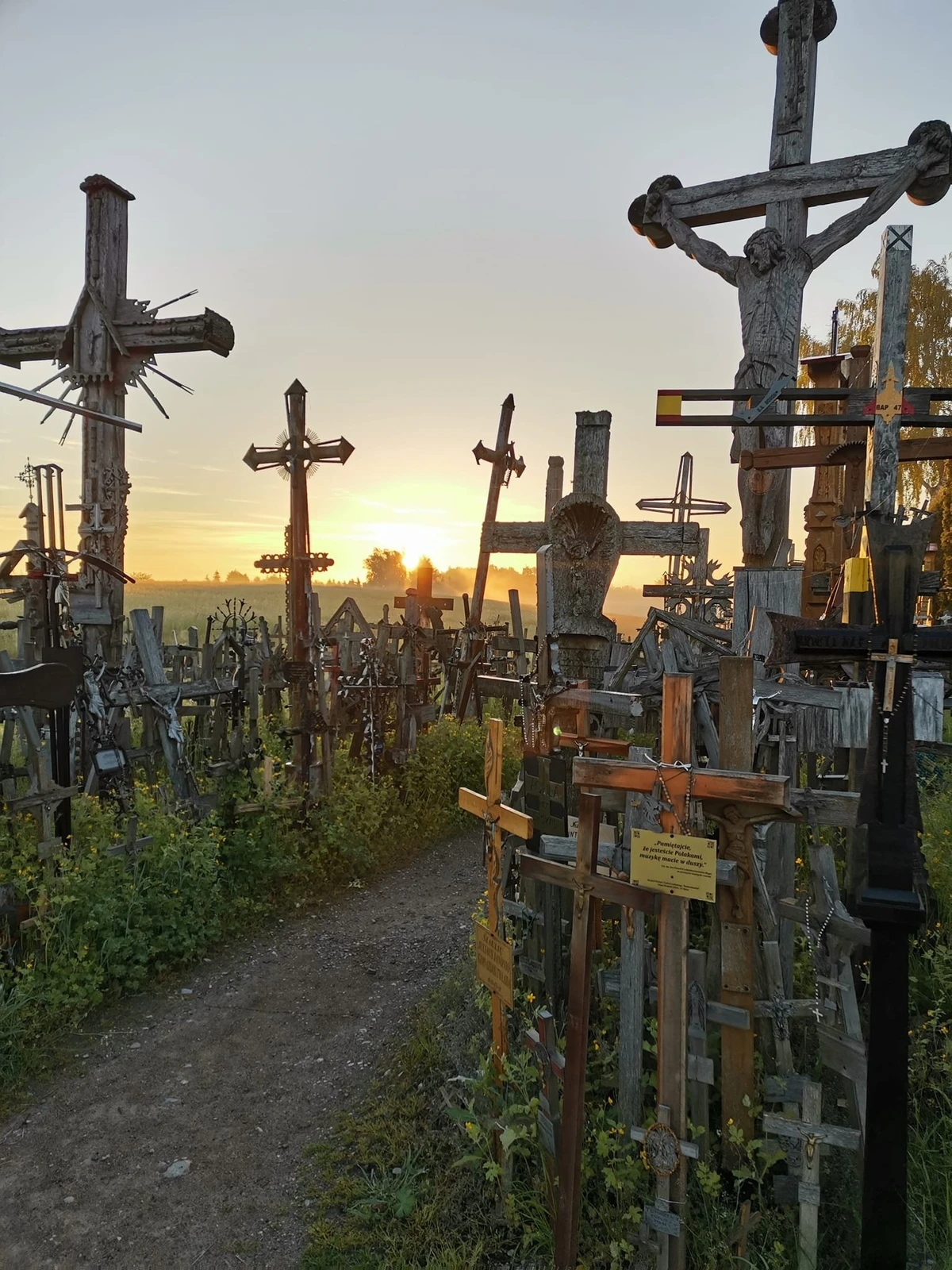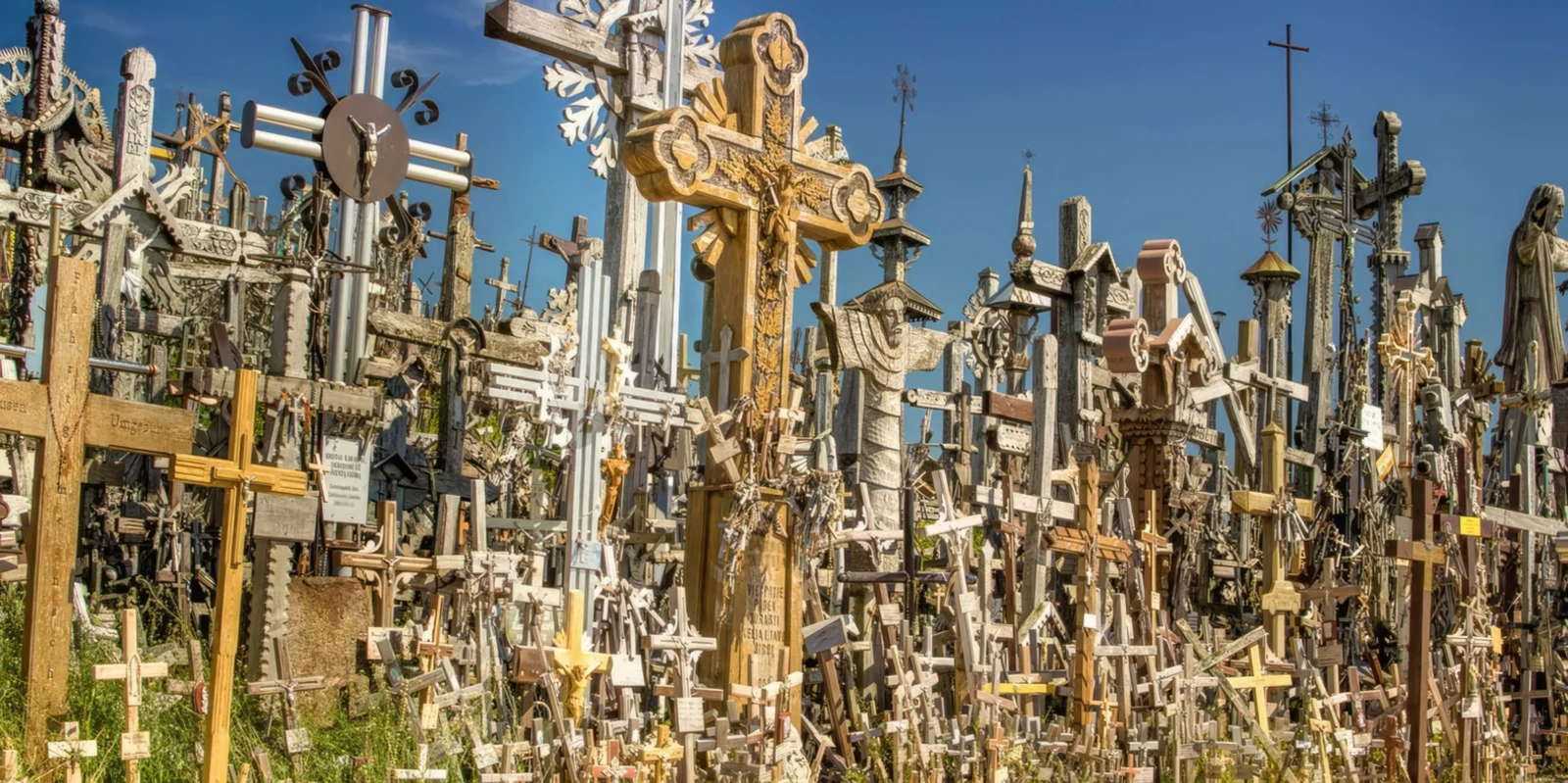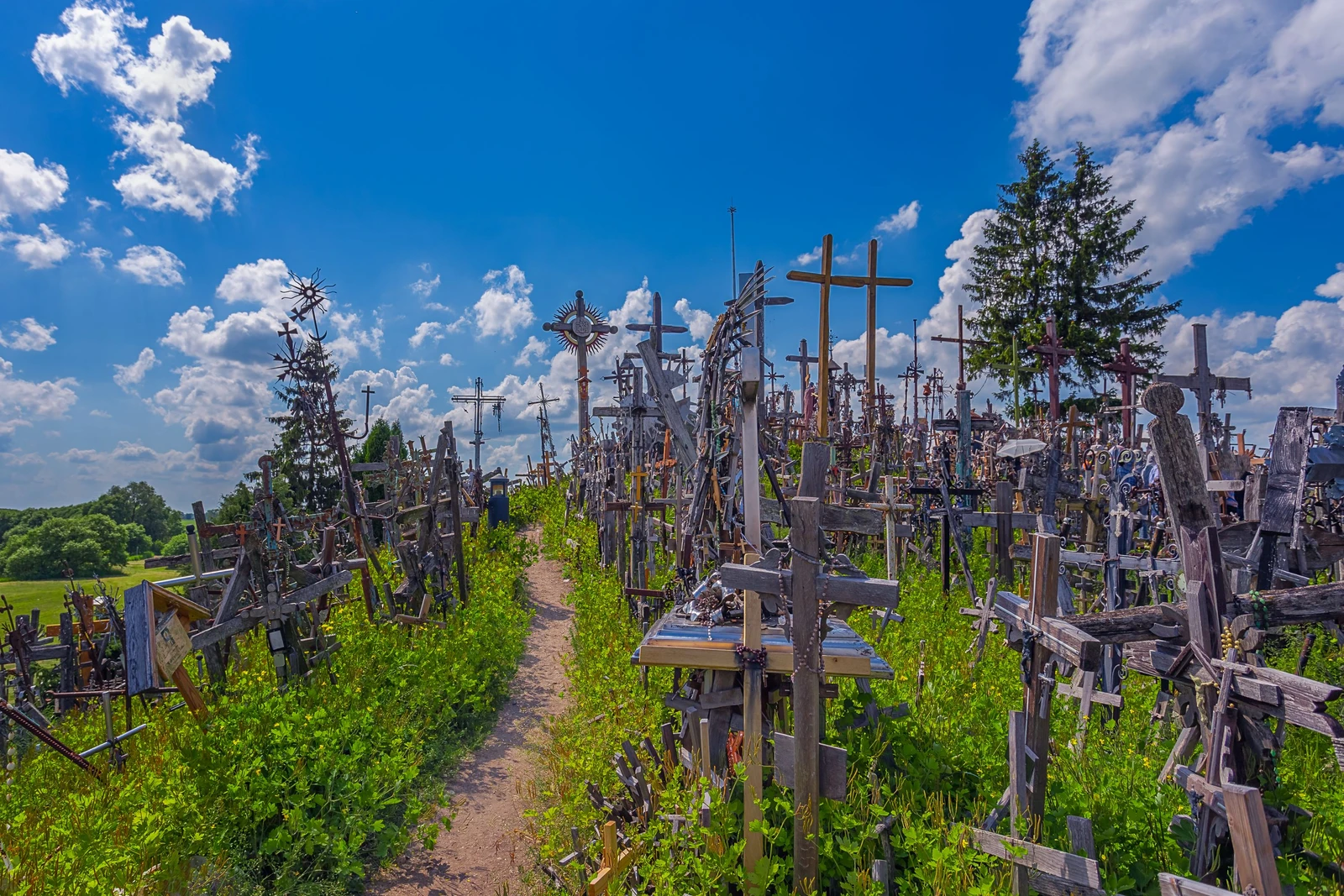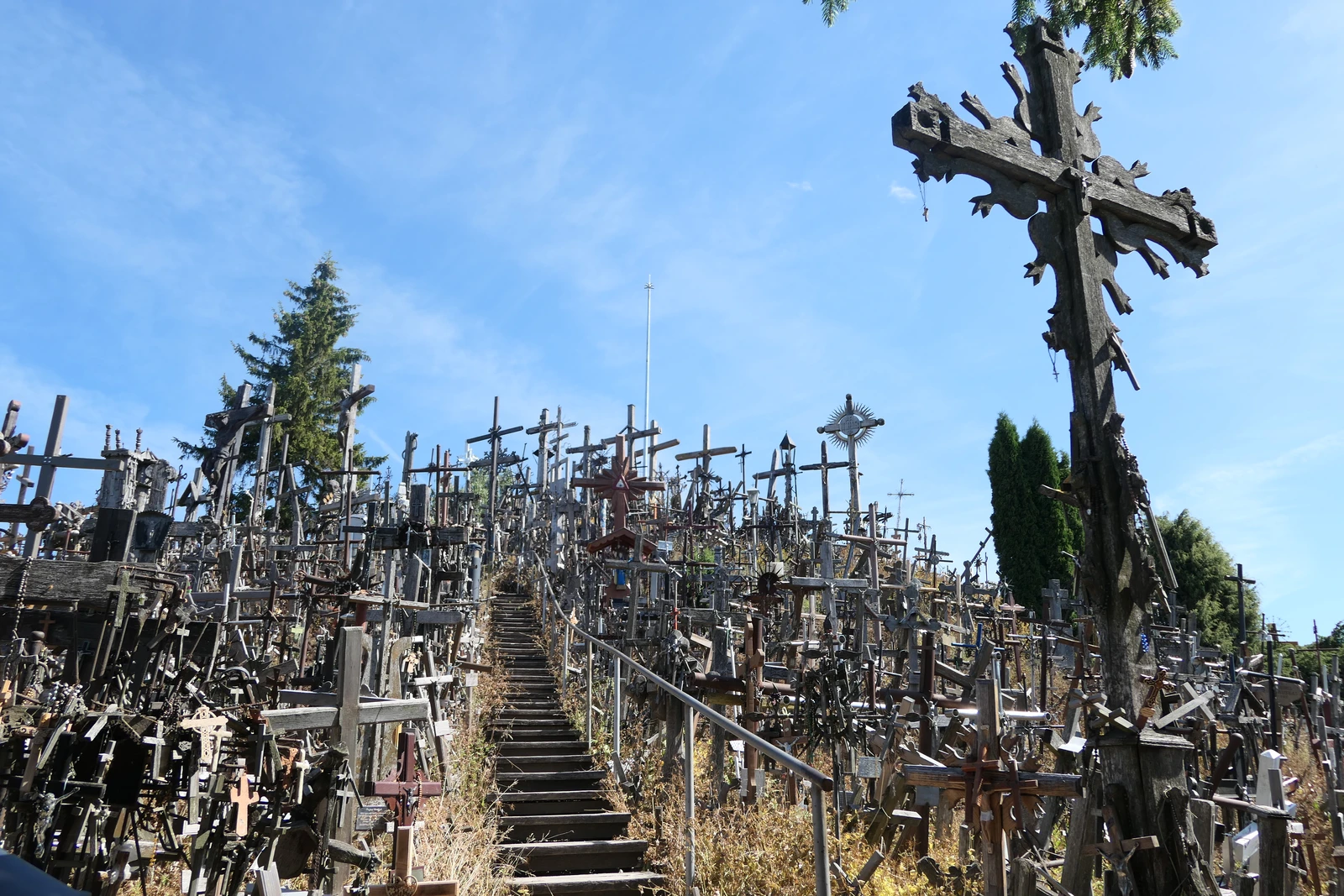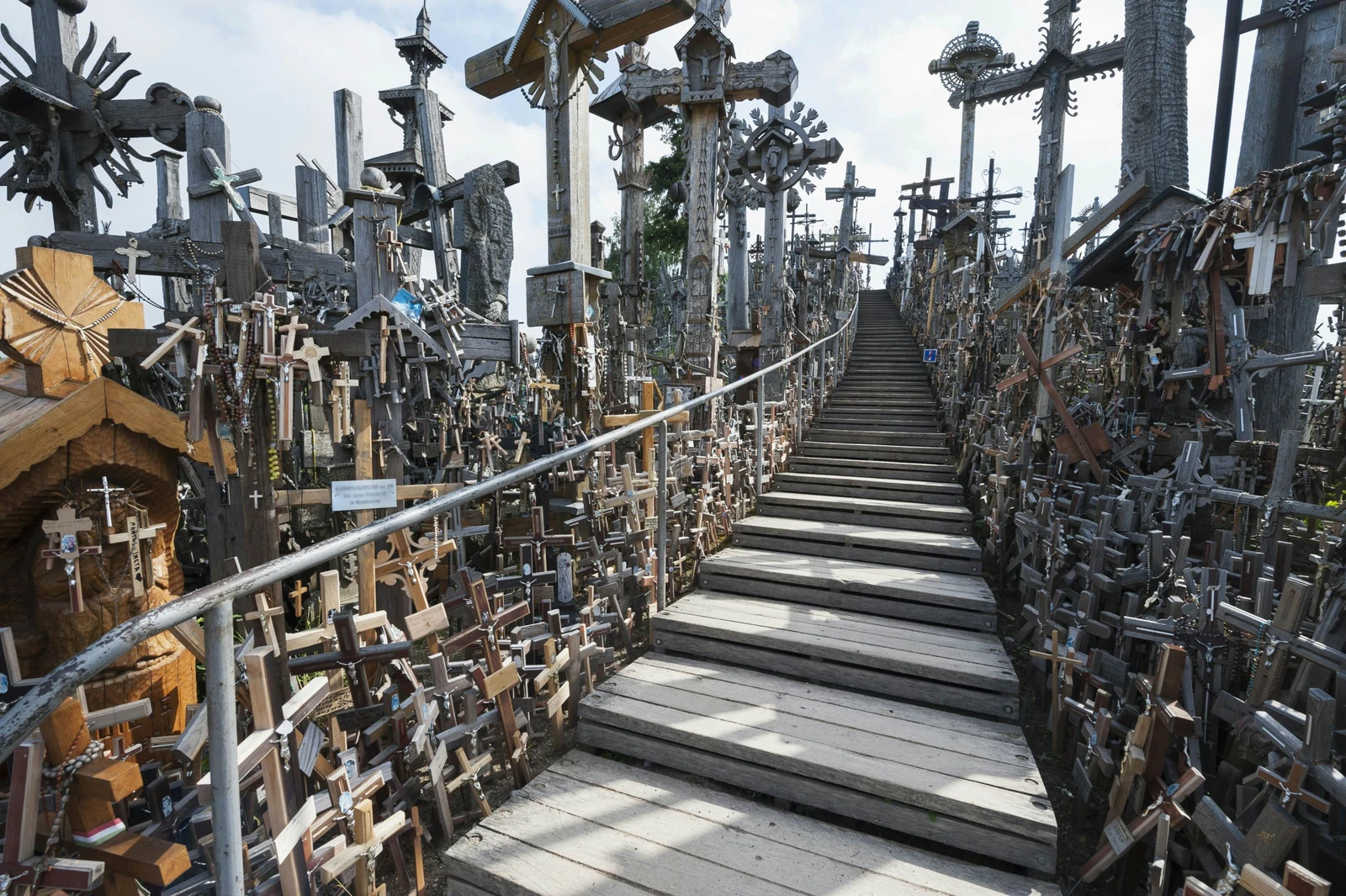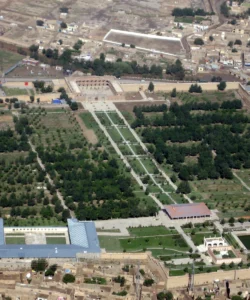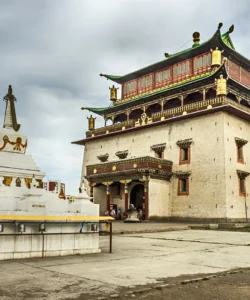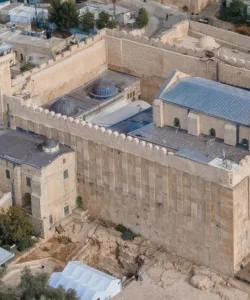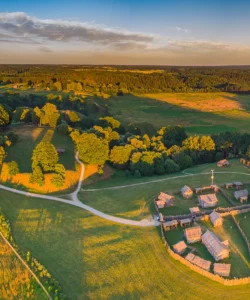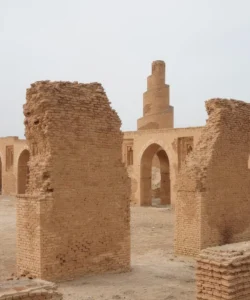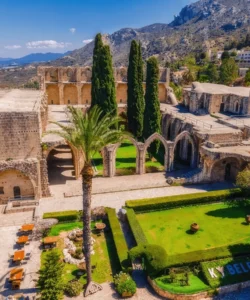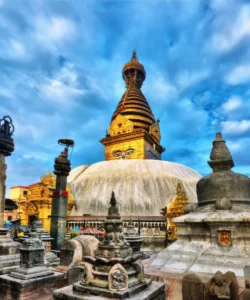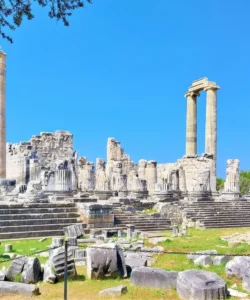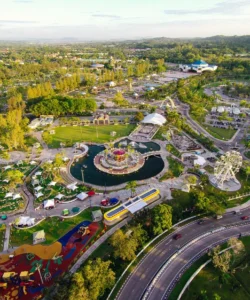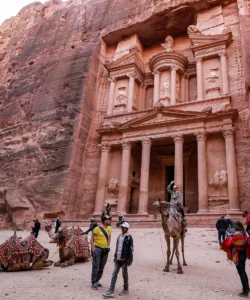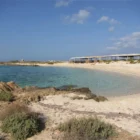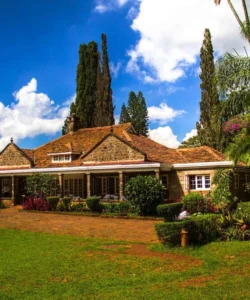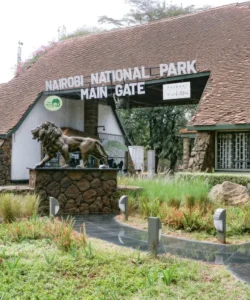The Hill of Crosses (Kryžių kalnas) is an extraordinary and profoundly moving pilgrimage site located near the city of Šiauliai in northern Lithuania. It is not a natural formation, but a small mound that has been covered with hundreds of thousands of crosses of every conceivable size, material, and design. These crosses, alongside crucifixes, statues of the Virgin Mary, and countless effigies and rosaries, represent centuries of Lithuanian Catholic devotion and, more powerfully, the nation’s peaceful endurance and defiance in the face of foreign occupation and oppression.
Listen to an introduction about Hill of Crosses

Name: Hill of Crosses (Lithuanian: Kryžių kalnas)
Address: Meškuičiai Eldership, Šiauliai District Municipality, Lithuania. It’s about 12 kilometers (7.5 miles) north of Šiauliai city.
How to get there:
Reaching the Hill of Crosses, involves a significant international journey to Europe, followed by domestic travel within Lithuania:
- From Vilnius to Šiauliai:
- By Bus: Buses depart frequently from Vilnius Bus Station to Šiauliai. The journey takes approximately 2.5 hours. This is the most common way.
- By Train: Trains also connect Vilnius to Šiauliai, taking around 2.5 hours.
- By Car: Driving from Vilnius to Šiauliai takes about 2 hours.
- From Šiauliai to the Hill of Crosses:
- Local Bus: Take a local bus from Šiauliai Bus Station (Platform 12 is common for buses to Joniškis) and ask the driver to let you off at the “Domantai” stop (the third stop from Šiauliai). The ride is about 15 minutes. From the Domantai bus stop, it’s a pleasant 2-kilometer (1.2-mile) walk along a small road through farmland to reach the Hill of Crosses.
- Taxi: A taxi from Šiauliai to the Hill of Crosses is a quick and direct option (around 15-20 minutes). You can negotiate a round-trip fare with waiting time.
- Organized Tour: Many tour operators in Vilnius or Riga offer day trips or transfers that include a stop at the Hill of Crosses. This is often the most convenient option if you prefer a guided experience.
- Within the site: The Hill of Crosses itself is explored entirely on foot.
Best Time to Visit:
The Hill of Crosses is open 24/7, year-round, and always free to enter.
- Spring (April-May) and Autumn (September-October): Pleasant temperatures, fewer crowds, and the changing colors of the surrounding farmland offer a beautiful backdrop.
- Summer (June-August): Warmest weather and the busiest time.
- Winter (November-March): A stark, solemn, and incredibly atmospheric experience when covered in snow, though it can be very cold. The silence and the snow-dusted crosses create a powerful visual.
Landscape and Architecture:
The “architecture” of the Hill of Crosses is fundamentally the accumulation of countless religious symbols, creating a unique, organic, and ever-growing monument:
- A Low Hill on Farmland: The site is a relatively small, low mound rising gently from a flat, agricultural landscape. Its humble natural setting makes the sheer volume of crosses all the more impactful.
- Countless Crosses: The hill is densely covered with an estimated over 100,000 crosses, ranging from tiny, intricately carved wooden crucifixes hanging from larger ones, to massive metal crosses several meters tall. They come in all shapes, sizes, and materials, including wood, metal, and plastic.
- Other Religious Artifacts: Interspersed among the crosses are statues of the Virgin Mary, various saints, rosaries, photographs, and other devotional objects, creating a dense and layered tapestry of faith.
- No Formal Organization: The crosses are not systematically arranged; they are placed by pilgrims in a seemingly organic and sometimes chaotic manner, reflecting individual acts of devotion. This gives the hill a raw, authentic feel.
- Paths and Passageways: Small, informal paths weave through the dense thicket of crosses, allowing visitors to walk deep into the heart of the hill and experience the scale of the phenomenon up close.
- Symbolic Monastery/Chapel: A small, modern Franciscan monastery with a chapel has been built behind the hill (consecrated in 2000), offering a place for prayer and contemplation. The chapel is notably designed with a large window behind the altar, perfectly framing a view of the Hill of Crosses.
- Papal Cross: A significant large metal cross, prominently positioned at the site, was gifted by Pope John Paul II after his visit in 1993, bearing an inscription of his gratitude to the Lithuanian people.
What makes it famous:
The Hill of Crosses is famous for:
- Unique Pilgrimage Site: It is a globally unique and powerful pilgrimage site, a testament to the individual and collective faith of the Lithuanian people. There is no other place quite like it in the world.
- Symbol of Resistance and Resilience: Its fame grew exponentially during the Soviet occupation (1944-1990). The atheistic Soviet regime repeatedly attempted to destroy the hill (bulldozing, burning, melting crosses) but locals defiantly continued to replant crosses, often secretly at night. This made the hill a potent symbol of peaceful resistance, national identity, and unwavering Catholic faith against oppression.
- Visit by Pope John Paul II: His visit in 1993 brought international attention and affirmed its significance as a place of hope, peace, love, and sacrifice.
- Living Monument: It is not a static monument but an ever-growing, active site. Visitors are encouraged to bring and place their own crosses, contributing to its continuous evolution.
- Linguistic and Folk Art Significance: The tradition of Lithuanian cross-crafting (kryždirbystė), often seen in the elaborate wooden crosses on the hill, is recognized by UNESCO as part of Lithuania’s intangible cultural heritage.
- Profound Emotional Impact: Regardless of one’s religious beliefs, the sheer volume and deeply personal nature of the crosses create an incredibly moving and thought-provoking experience.
Differences from some other wonders:
The Hill of Crosses distinguishes itself from other religious sites, memorials, and natural wonders in several profound ways:
- Accumulative and Organic “Architecture”: Unlike man-made architectural marvels (e.g., temples, palaces) or natural geological formations, the Hill of Crosses is an ever-growing, organic “sculpture” created by countless individual acts of devotion. Its “architecture” is the accumulation of hundreds of thousands of individual, mostly non-standardized, human-placed objects. This continuous, collective, and spontaneous creation is unique.
- Passive Resistance Symbol: While many memorials commemorate violent struggles, the Hill of Crosses is a powerful symbol of peaceful and passive resistance. Its history is one of defiant spiritual perseverance against overwhelming force, not armed conflict. This unique form of protest and survival is profoundly different from military forts or monuments to battles.
- No Central Deity or Shrine (initially): Unlike traditional temples or churches with a main altar, statue, or relic, the Hill of Crosses, in its origin, was a mound of individual prayers and memorials, with no central shrine. The later chapel is a recent addition. The crosses are the objects of devotion and symbolism.
- Highly Personal and Continuously Active: Visitors don’t just observe; they participate by adding their own crosses, making it a living, evolving monument. This level of continuous, direct public contribution is rare among major pilgrimage sites.
- Juxtaposition with its Destruction: The narrative of its repeated destruction by the Soviets and immediate, defiant re-erection by the Lithuanians is central to its fame and makes its current existence a powerful testament to human spirit, a history rarely shared by other continuous pilgrimage sites.
- Scale of the “Forest of Crosses”: While other places might have symbolic crosses or memorials, the sheer volume and density of crosses covering an entire hill, creating a literal “forest” or “thicket” of crosses, is visually and emotionally overwhelming in a way that is specific to this site.
In essence, the Hill of Crosses is a hauntingly beautiful and profoundly unique wonder, a living, growing testament to the unwavering faith, resilience, and peaceful defiance of the Lithuanian people, leaving an indelible mark on all who witness its silent, powerful message.
